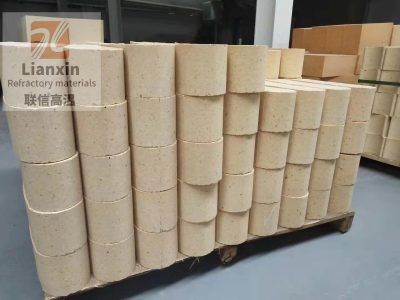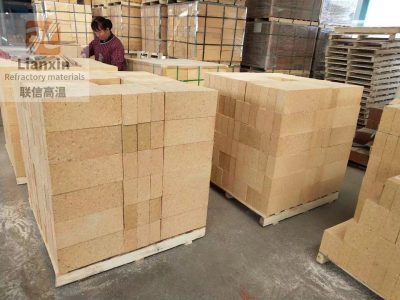High alumina bricks occupy an important position in the field of refractory materials due to their unique physical and chemical properties. The following is an introduction to the characteristics of high alumina bricks:

High Alumina Brick
Refractory
High temperature stability: High alumina bricks can withstand temperatures as high as 1750~1790℃, and are high-grade refractory materials, which are much higher than the refractoriness of clay bricks and semi-silica bricks.
Slag resistance
Chemical erosion resistance: The high Al2O3 content in high alumina bricks makes it effectively resistant to the erosion of acidic and alkaline slags. Although it contains SiO2 components and its ability to resist alkaline slag is slightly weaker, its overall slag resistance is better than that of many refractories.
Load softening temperature
High temperature bearing capacity: Due to low impurities and less fusible glass, the load softening temperature of high alumina bricks is higher than that of clay bricks. This ensures a strong ability to withstand mechanical and thermal loads at high temperatures.
Thermal shock stability
Resistance to thermal shock: High alumina bricks can remain stable under rapidly changing temperatures, which allows them to be used in environments with large temperature differences, such as high-temperature equipment such as hot blast furnaces.
Creep rate
Low creep performance: Certain types of high-alumina bricks (such as high-load soft and low-creep high-alumina bricks) have a low high-temperature creep rate, which means that under long-term high temperature, the shape changes very little, thus ensuring stable structure and performance.
Manufacturing process
Strict production process: In the production process of high-alumina bricks, the proportion of clinker is high, and the firing temperature can reach 1500-1600℃. The raw materials are strictly selected and graded during production to ensure the high quality of the products.
Diversity
Rich sources of raw materials: According to different resource conditions and product requirements, high-alumina bricks can use different types of raw materials, such as hydrous aluminum oxide minerals and artificial synthetic raw materials, to adapt to different industrial applications.
Application field
Wide range of applications: Due to their physical and chemical properties, high-alumina bricks are widely used in the masonry of various industrial furnaces, such as blast furnaces, hot blast furnaces, electric furnaces, etc., as well as for the production of some special refractory products, such as regenerative checker bricks, plugs and nozzle bricks for casting systems, etc.
In general, high alumina bricks have shown their indispensable value in extremely demanding industrial environments due to their excellent refractoriness, slag resistance and load softening temperature at high temperatures. Their stable thermal shock resistance and low creep rate allow them to maintain structural and functional stability even in repeated thermal cycles, while strict manufacturing processes and rich raw material sources ensure their diversity and flexibility in application.

High Alumina Brick
